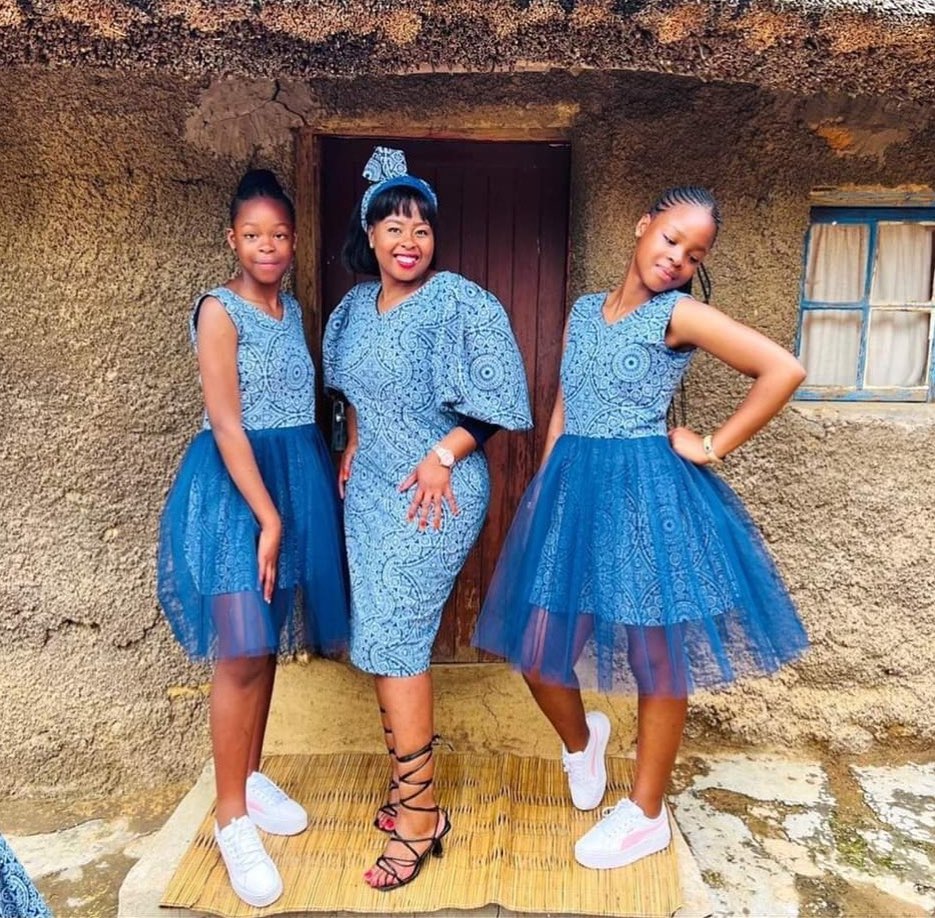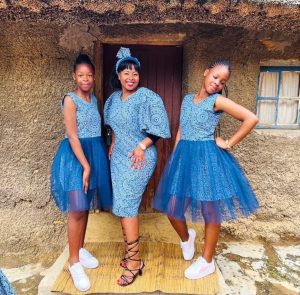Embracing Tradition: Makoti and the Shweshwe Dress
Embracing Tradition: Makoti and the Shweshwe Dress

Understanding the Makoti Tradition
Meaning and significance of being a Makoti
The Makoti tradition holds immense cultural importance in South African culture. Makoti refers to a newly married woman who joins her husband’s family and takes on certain roles and responsibilities. The term “Makoti” translates to “bride” in English, but it holds a deeper meaning beyond just marriage. Being a Makoti signifies a woman’s transition into a new chapter of her life, where she becomes a daughter of her husband’s family, contributing to the growth and unity of the community.
Embracing Tradition: Makoti and the Shweshwe Dress
Role and responsibilities of a Makoti in South African culture
As a Makoti, a woman takes on various roles and responsibilities. She is expected to respect and honor her husband’s family, displaying humility and cultural awareness. Makotis often play a vital role in preserving and passing down cultural traditions and customs to future generations. They participate in rituals and ceremonies, maintain family relationships, and contribute to the overall well-being and harmony of the family unit. The Makoti tradition is an important aspect of South African culture that celebrates the significance of marriage and strengthens familial ties.
Embracing Tradition: Makoti and the Shweshwe Dress




The Beauty of the Shweshwe Dress
History and origins of the Shweshwe fabric
The Shweshwe dress is a traditional garment that holds deep cultural significance in South Africa. The fabric itself has a rich history and is believed to have originated in the 19th century. It was brought to South Africa by German settlers and quickly adopted by the local Xhosa people. Today, the Shweshwe fabric is known for its distinctive geometric patterns and vibrant colors, making it a beloved symbol of African heritage.
Traditional patterns and colors of the Shweshwe dress
The traditional Shweshwe dress is characterized by its intricate patterns and bold colors. The patterns often feature geometric shapes, such as circles, diamonds, and zigzags, which symbolize various aspects of Xhosa culture. The colors used in the Shweshwe dress are vibrant and eye-catching, ranging from blues and greens to reds and oranges. Each color carries its own symbolic meaning, further deepening the cultural significance of the garment.
The Shweshwe dress is not just a piece of clothing; it is a celebration of tradition and heritage. Embracing this beautiful garment not only honors the history of the fabric and the Xhosa culture but also allows individuals to connect with their roots and showcase their African pride.
Embracing Tradition: Makoti and the Shweshwe Dress



Dressing like a Makoti
Traditional attire worn by Makoti
Dressing like a Makoti involves embracing the rich tradition of the Shweshwe dress. Makoti refers to a bride or a newly married woman in South African culture. The Shweshwe dress, with its vibrant patterns and colors, is a staple in traditional weddings and other cultural events. It is often characterized by its distinct geometric and floral designs, typically printed on cotton fabric.
Embracing Tradition: Makoti and the Shweshwe Dress
Ways to incorporate the Shweshwe fabric into modern fashion
While the Shweshwe fabric has deep roots in tradition, it can also be incorporated into modern fashion to create unique and stylish looks. Here are a few ways to embrace the Shweshwe fabric in contemporary fashion:
- Dresses and skirts: Opt for a Shweshwe dress or skirt, which can be paired with a simple blouse or top. This combination creates a fusion of tradition and modernity.
- Accessories: Add a touch of Shweshwe to your outfit through accessories like head wraps, scarves, or bags. These accessories can instantly elevate your look and showcase your appreciation for African culture.
- Shweshwe-inspired prints: Look for Shweshwe-inspired prints on modern silhouettes like jumpsuits, blazers, or trousers. This allows you to embrace the essence of the Shweshwe fabric while staying fashion-forward.



By embracing the tradition of Makoti and incorporating the Shweshwe fabric into your wardrobe, you can celebrate South African culture and create unique fashion statements.
Celebrating Tradition: Makoti Weddings
Traditional Makoti wedding customs and rituals
Makoti weddings, also known as traditional African weddings, are rich in culture and heritage. These weddings are steeped in age-old customs and rituals that have been passed down through generations. From the momentous introduction of the bride to the bride price negotiations, every step of the Makoti wedding is filled with symbolism and significance. Traditional dances, songs, and attire play a vital role in these celebrations, honoring the unique traditions of each tribe and community.
The symbolism behind the Shweshwe dress in Makoti weddings
The Shweshwe dress is an integral part of Makoti weddings, symbolizing tradition, heritage, and cultural identity. This vibrant and colorful fabric has become synonymous with African weddings. The intricate patterns and designs of the Shweshwe dress tell a story, representing the history and customs of the wearer’s tribe. Wearing the Shweshwe dress on this special day is a way to honor and embrace African traditions, paying homage to the ancestors and celebrating the beauty of cultural diversity.
Overall, Makoti weddings provide a platform to showcase the rich African heritage and celebrate the customs and traditions of each community. From the meaningful rituals to the intricate Shweshwe dresses, these weddings are a testament to the beauty and importance of embracing tradition in a modern world.
Embracing Tradition: Makoti and the Shweshwe Dress



Efforts to keep the Makoti tradition alive
The Makoti tradition, an integral part of South African culture, is being preserved through various efforts. Families and communities continue to pass down the rituals and customs associated with becoming a makoti (a married woman) to younger generations. Additionally, organizations and individuals are working to promote and celebrate the significance of the Shweshwe dress, a traditional garment worn by makotis. Designers are incorporating modern elements into the dress while still honoring its cultural roots. Events such as Makoti Expos and fashion shows showcase the beauty and importance of the tradition, attracting both local and international audiences. These efforts ensure that the makoti tradition and the Shweshwe dress remain a cherished part of South African heritage for years to come.
Embracing Tradition: Makoti and the Shweshwe Dress















